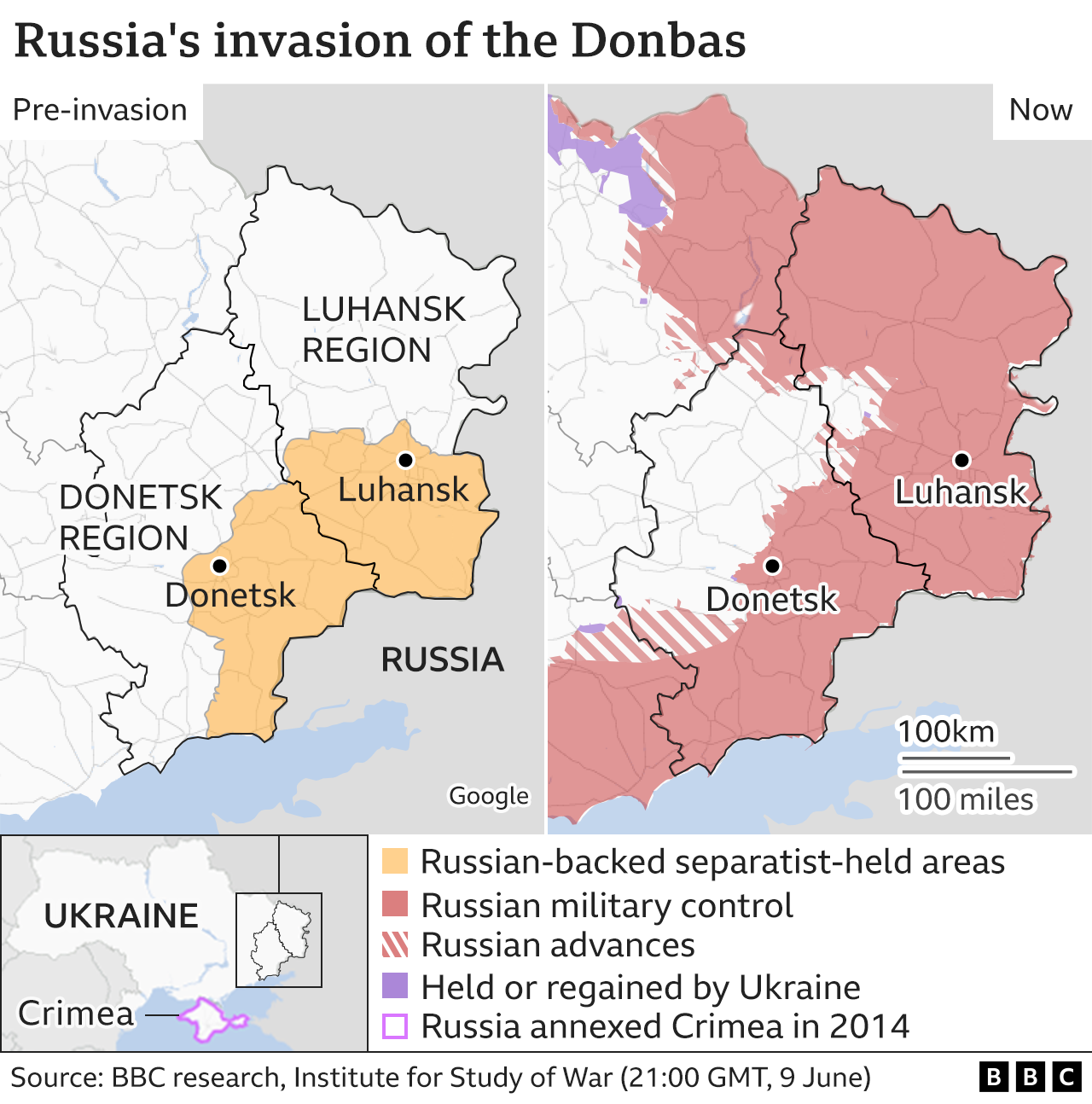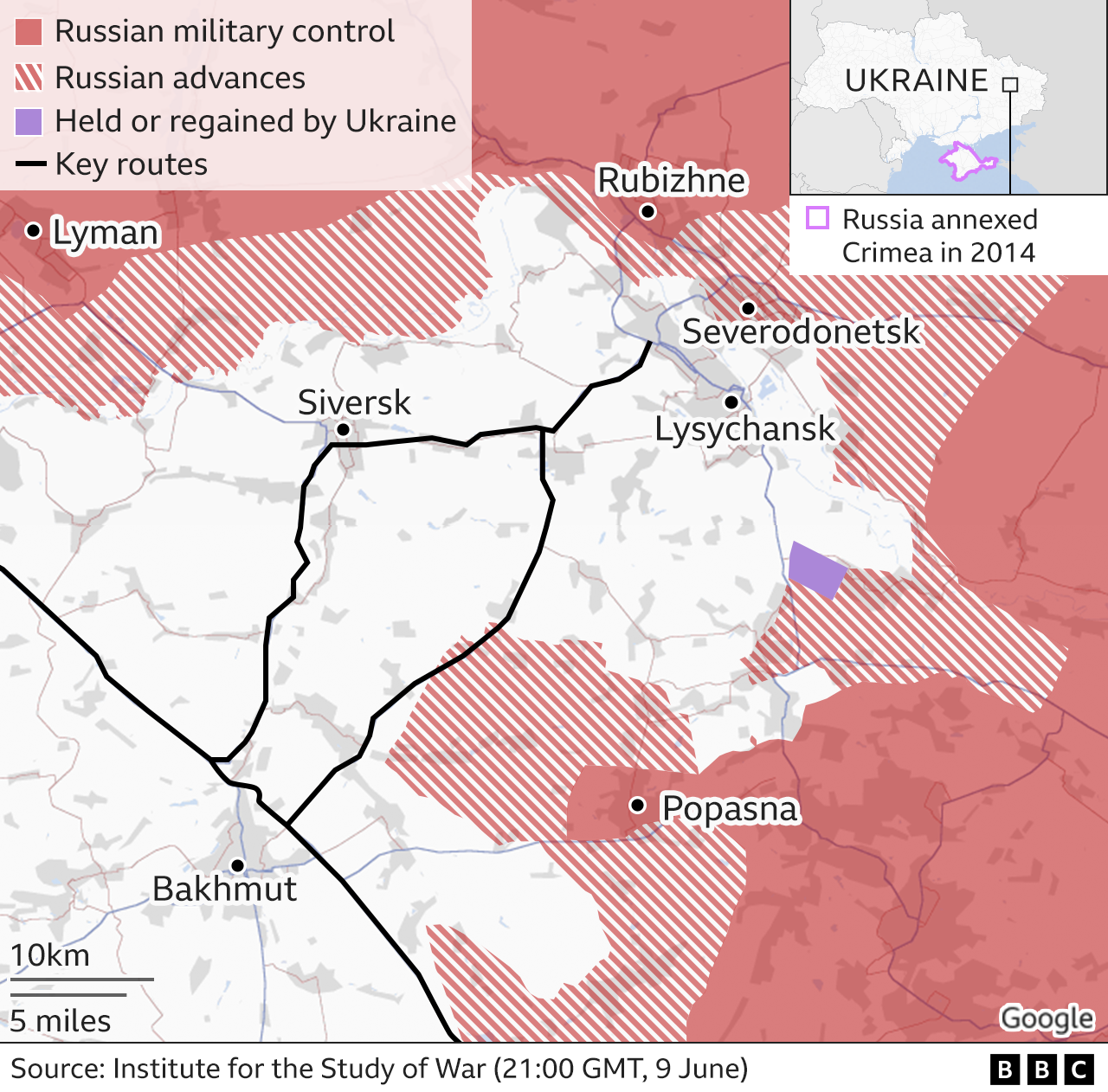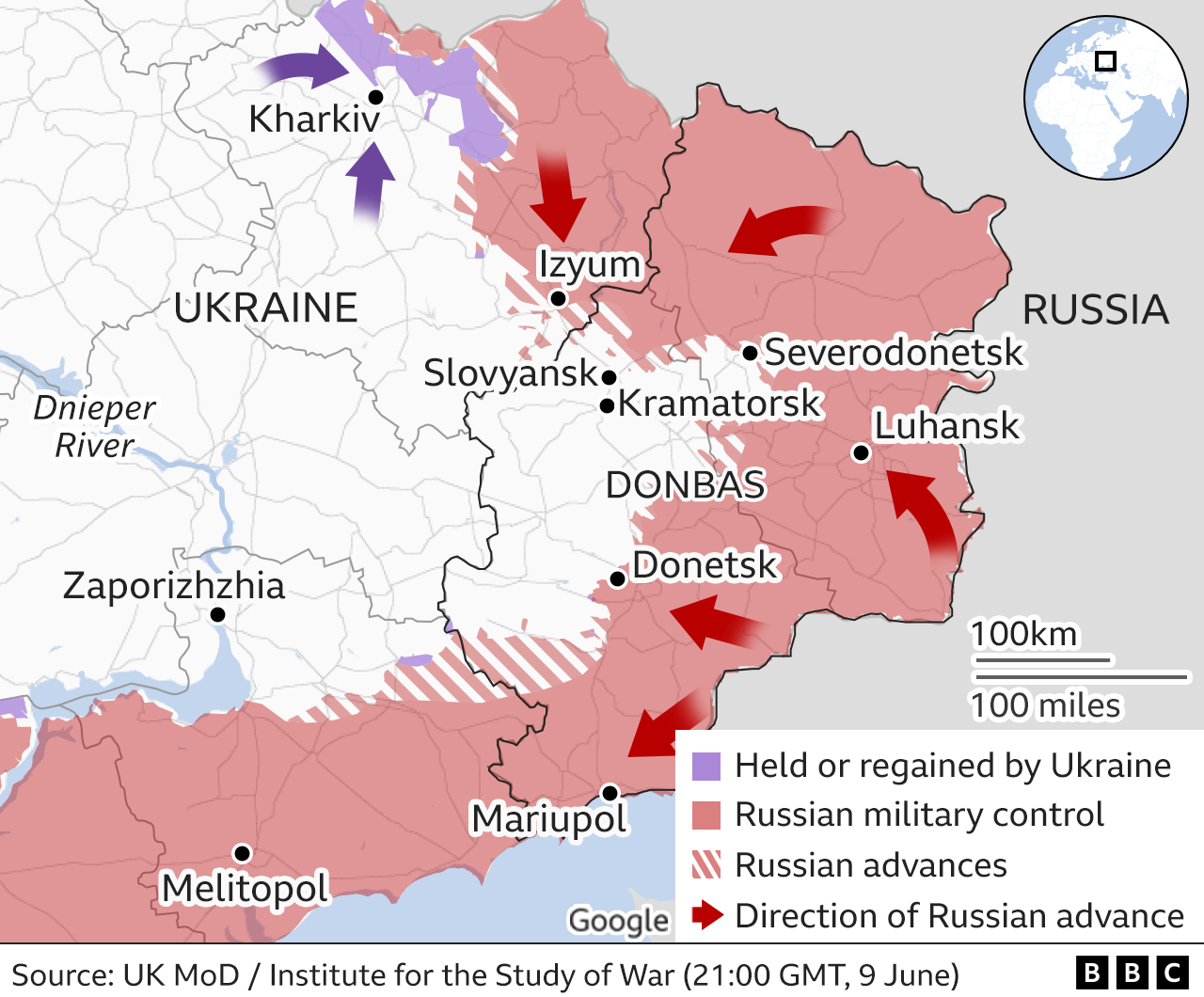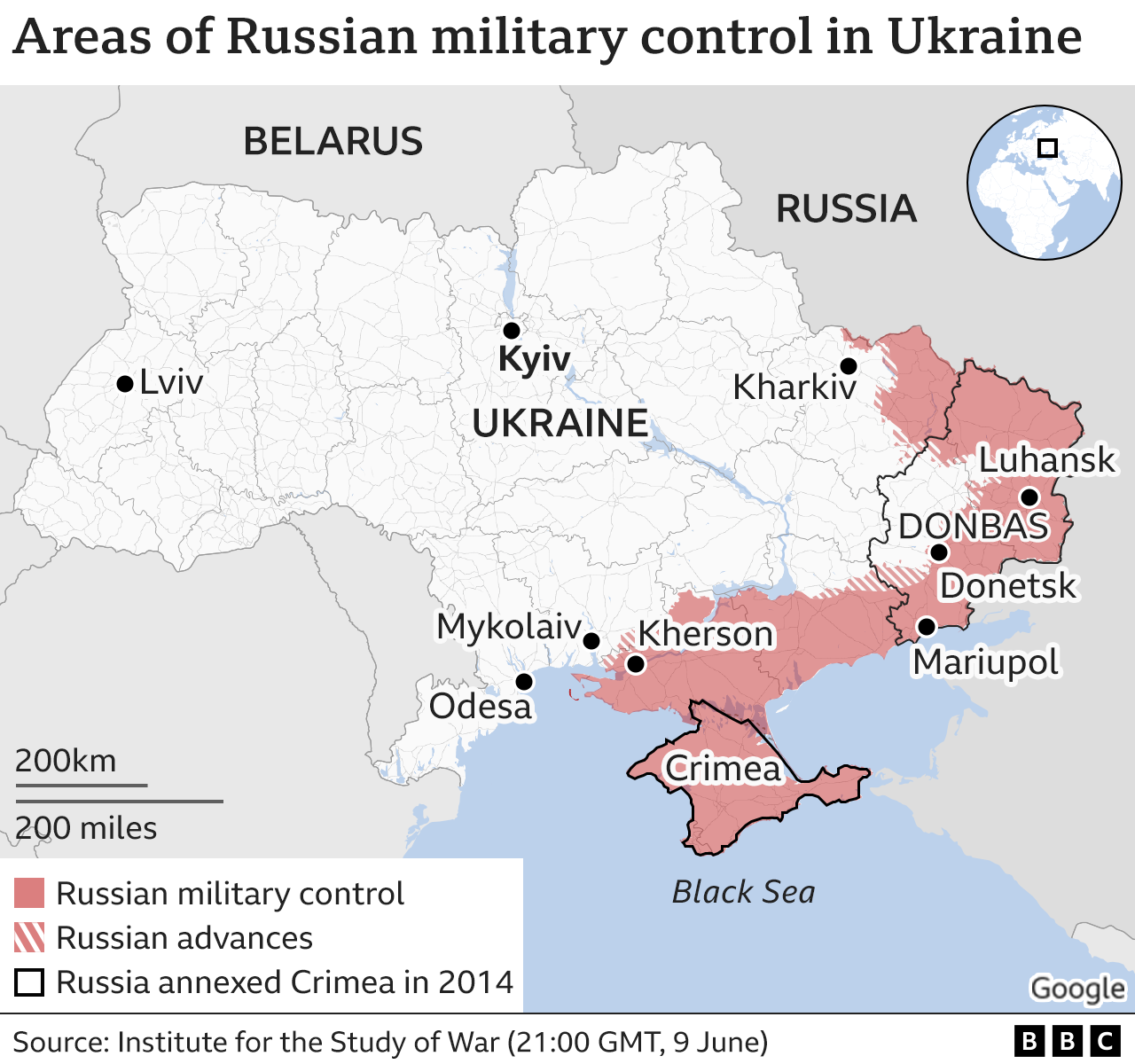BBC News 10 June 2022 - by the Visual Journalism Team
Heavy fighting continues in east Ukraine, with key locations under intense bombardment from Russian forces.
Here are the latest developments:
Eastern cities under heavy bombardment
Russian officials have said their forces are fighting for the "complete liberation" of the Donbas, which broadly refers to Ukraine's eastern regions of Donetsk and Luhansk, where Russian-backed separatists held significant territory before the invasion.
Russia has made slow but significant advances in the east, and now controls over 90% of the Luhansk region.
Russian forces are trying to take full control of Severodonetsk. They currently occupy all of the residential areas of the city, according to the Institute for the Study of War (ISW), and fighting is concentrated around the Azot industrial zone.
Taking the city is one of Russia's key aims as it would mean they control almost all of the Luhansk region.
Russian troops have made "little progress in attempts to encircle the wider area," according to the UK Ministry of Defence (MoD).
They have, however, moved north from Popasna, with the key supply route from Bakhmut to Lysychansk being bombarded by Russian artillery.
Should the route be taken by Russia, Severodonetsk and Lysychansk would be left with one supply road via Siversk.
Lyman and Rubizhne are now fully under Russian control.
Russian forces have seen big losses
Russian forces have suffered heavy losses since the invasion began.
The UK Ministry of Defence says Russia is likely to have suffered devastating losses among its middle and junior ranking officers. It says these losses are likely to contribute to a loss of morale and poor discipline among lower ranks.
Significant quantities of Russian weaponry have also been destroyed.
As a result, Russia has tried to combine some heavily depleted units, forming what some analysts have called 'Frankenstein forces' to fight in the east.
Further north, Russian units are continuing to shell Ukrainian positions north of Kharkiv city, according to the ISW.
Russian forces are believed to be strengthening defensive lines between Kharkiv city and the Russian border.
Russia targets full control of south
Russian forces initially made rapid gains in the south, with their main objective being the creation of a land corridor between Crimea, which it annexed in 2014, and areas held by Russian-backed separatists in Donetsk and Luhansk.
But strong resistance from Ukrainian forces near Mykolaiv in the west and in Mariupol significantly slowed Russian advances.
Russia is now fully in control of the port city of Mariupol, after a siege lasting more than two months came to an end on 20 May.
There is a shortage of fresh water and medical facilities in Mariupol and the city is at risk of a major cholera outbreak, according to the MoD.
Some 100,000 people are still in the city.
The ISW says Russian forces are intensifying ground attacks in Zaporizhzhia region.
To the west, Russia had aimed to take control of Odesa and cut off Ukraine's access to the Black Sea, but its forces were blocked by a staunch defence in Mykolaiv and forced back towards Kherson by a Ukrainian counteroffensive in March.
Analysts say Russia has continued to reinforce Snake Island in the Black Sea with air defences in order to protect its naval vessels blockading the Ukrainian coast and hindering the resumption of trade.
Russia invaded Ukraine on 24 February, but Ukrainian forces retook large areas around Kyiv in early April after Russia abandoned its push towards the capital.
Areas in the west of the country, including Lviv, have seen missile attacks but no attempt by Russian forces to take and occupy ground.
By David Brown, Bella Hurrell, Dominic Bailey, Mike Hills, Lucy Rodgers, Paul Sargeant, Alison Trowsdale, Tural Ahmedzade, Mark Bryson, Zoe Bartholomew, Sean Willmott, Sana Dionysiou, Joy Roxas, Gerry Fletcher, Jana Tauschinsk, Debie Loizou, Simon Martin and Prina Shah.
About these maps
To indicate which parts of Ukraine are under control by Russian troops we are using daily assessments published by the Institute for the Study of War with the American Enterprise Institute's Critical Threats Project.
To show key areas where advances are taking place we are also using daily updates from the UK Ministry of Defence and BBC research.
The situation in Ukraine is fast moving and it is likely there will be times when there have been changes not reflected in the maps.






